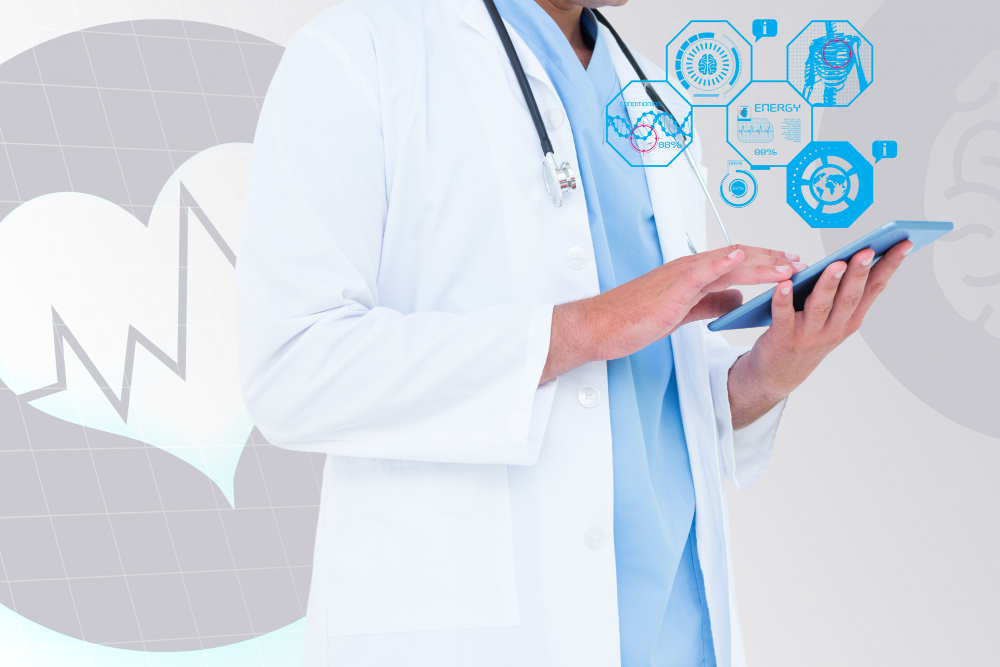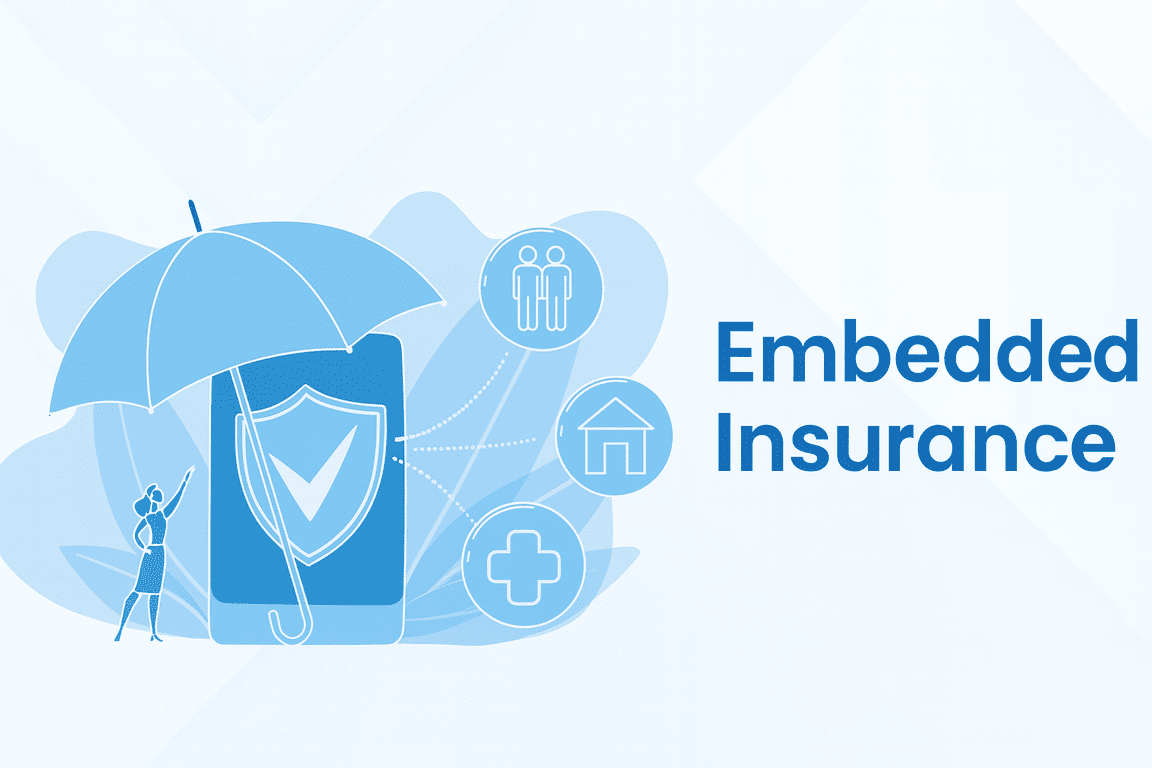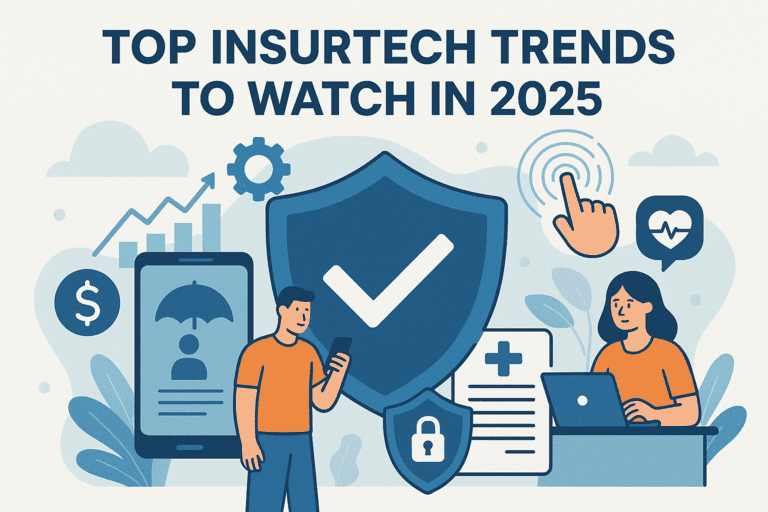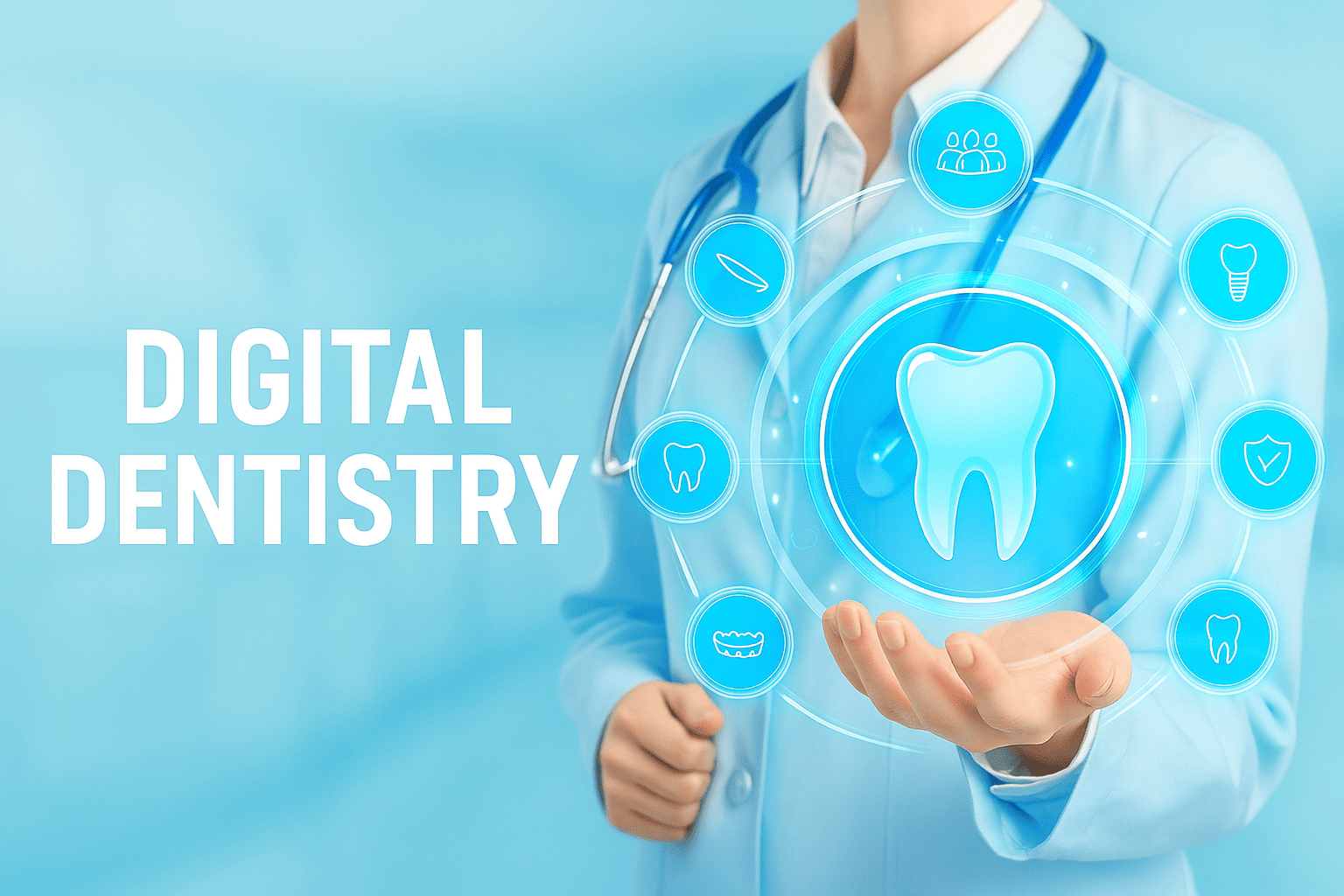Discover how achieving interoperability in healthcare improves patient outcomes and reduces costs. Explore the latest DevOps trends in healthcare for seamless data exchange.
Table of contents:
- What is healthcare interoperability?
- What data is exchanged via interoperable systems?
- Why is interoperability important in healthcare?
- What are the standards for hospital interoperability?
- The Levels of Health IT Interoperability
- Examples of Interoperability in Healthcare
- The Benefits of Increasing Data Interoperability in Healthcare
- The Challenges to Implementing Interoperability in Healthcare IT
- FAQ
In emergency situations, quick access to medical data is especially crucial. Thus, interoperability in healthcare becomes an issue number one. So, we are inviting you to join a great piece on the importance of interoperability in healthcare and how it is transforming healthcare, revolutionizing patient care, and reshaping the future of medicine.
What is healthcare interoperability?
Healthcare interoperability stands for the seamless sharing and exchange of medical data among different healthcare systems, regardless of their individual vendors. It’s about breaking down data to ensure medical information is accessible and usable wherever and whenever needed.
The healthcare industry requires precise coordination and teamwork. This way, it depends on the smooth flow of data to provide the highest quality of care to patients. But the question remains: how to achieve interoperability in healthcare? Let’s tackle this.
#1 Understanding the basics (everyone should understand what it is)
#2 Following industry standards (compliance is crucial)
#3 Defining data exchange (what and how data will be exchanged and shared)
#4 Making data meaningful (the data has to go to the right place)
#5 Ensuring data security (data safety and collaboration with HIPPA are a must)
#6 Testing the systems (to verify whether data is exchanged effectively)
#7 Seeking expert assistance (working with healthcare compliance consulting firms)
By following these steps and avoiding any potential barriers, organizations can successfully achieve interoperability in healthcare, ensuring that patient data is accessible and secure and contributes to improved patient care.
What data is exchanged via interoperable systems?
Interoperable systems exchange a wide range of data crucial to patient care. These interoperability in healthcare examples include the following:
#1 Patient history
These digital records are a patient’s complete medical history. They include patient’s health information, including diagnoses, medications, treatment plans, and medical encounters. When it is possible to share EHRs across different systems, healthcare providers get access to the most up-to-date patient data. As a result, they can make well-informed decisions.
#2 Radiology tests
Interoperable systems support the exchange of various medical images, from X-rays and MRIs to CT scans and ultrasounds. This capability aids in diagnoses, treatment planning, and monitoring the progress of conditions. Radiologists and healthcare professionals can access these images promptly, fostering timely interventions.
#3 Lab results
Efficiently shared lab results are integral to interoperability in healthcare. From blood tests to biopsies, these findings are transmitted across systems to inform clinicians about a patient’s health status, enabling them to make timely assessments and necessary adjustments to treatment plans.
#4 Medication history
As mentioned earlier, it is a crucial component of the overall health record. Interoperable systems ensure this information is accessible to healthcare providers, reducing the risk of adverse drug interactions, overdoses, or other medication-related issues.
#5 Patient demographics
A patient’s basic information, such as name, date of birth, and contact details, is consistently available across various systems through interoperability. Consequently, healthcare professionals have access to and work only with up-to-date data.
Some additional types of data that are often exchanged via interoperable systems include:
#6 Vital signs
This type includes blood pressure, heart rate, respiratory rate, and temperature. These measurements are the most frequently shared to monitor a patient’s health status.
#7 Allergies and adverse reactions
These types of interoperability in healthcare are vital to safely prescribe and administer pills and avoid any allergic reactions.
#8 Prescription history
This includes details about previous prescriptions and medications the patient is currently taking, helping to avoid harmful drug interactions.
#9 Immunization records
Information about vaccinations and immunization history ensures that patients receive the necessary immunizations and avoid redundant or unnecessary shots.
#10 Care plan
Especially when changing a doctor, this data is essential to follow the most up-to-date care instructions for each patient. Doctors can avoid unnecessary prescriptions or get help in choosing one.
#11 Pathology reports
Data from pathology tests, like biopsies and cytology reports, are shared to support accurate diagnosis and treatment of diseases.
#12 Operative reports
It includes information on surgical procedures, including preoperative assessments, operative details, and postoperative outcomes, and is essential for coordinating care.
#13 Discharge summaries
These documents outline the treatment provided during a patient’s hospital stay and any follow-up care instructions.
#14 Insurance and billing information
This example of interoperability in healthcare ensures that billing information is accessible and helps streamline the administrative aspects of healthcare delivery.
#15 Social determinants of health
This example is often overlooked. Nonetheless, it is important to consider social factors, such as a patient’s living conditions, socioeconomic status, and access to resources. Usually, it gives insights into their overall health.
#16 Genomic data
We should thank the advancement of genomics first of all. However, the exchange of this data is even more important as it is possible to select treatments for an individual’s genetic profile.
Why is interoperability important in healthcare?
Interoperability in healthcare is vital. We’ve already mentioned that it helps medical professionals make quicker and more efficient decisions. But let’s break it down to why it is so essential for the development of the healthcare industry.
The importance of interoperability is revealed through various factors:
#1 Efficient data flow
It paves the way for seamless data exchange, allowing healthcare systems to communicate effortlessly. This rapid sharing of information accelerates decision-making and enhances the quality of care.
#2 Error reduction
Interoperability drastically minimizes errors in healthcare. With instant access to comprehensive patient data, the risk of miscommunication, duplicate tests, or medication errors disappears, ensuring patient safety.
#3 Enhanced patient care
Interoperability empowers healthcare providers to deliver patient-focused, well-coordinated care. Quick access to complete patient records means faster and more accurate diagnoses, more precise treatments, and better health outcomes.
#4 Cost savings
By eliminating redundant tests, paperwork, and administrative tasks, interoperability trims healthcare costs. It ensures a more streamlined, cost-effective system that benefits both healthcare organizations and patients.
#5 Regulatory compliance
Interoperability helps healthcare organizations adhere to vital healthcare regulations like HIPAA.
What are the standards for hospital interoperability?
There are interoperability standards in healthcare that have to be followed. It includes established standards like HL7 and FHIR. These standards play a pivotal role in shaping how data is exchanged within the healthcare landscape. By adhering to these standards, hospitals and healthcare facilities ensure that data is shared in a uniform and standardized format.
The significance of these standards lies in their ability to make data interpretation and utilization consistent across various systems and platforms. When all entities involved in patient care, from hospitals to laboratories and clinics, follow these standards, it simplifies the exchange of data, promoting more efficient communication and seamless collaboration. Patients can experience the benefits of these standardized practices through improved care quality and safety, reduced duplication of tests, and a more comprehensive and accurate view of their health history across different providers and systems.

The Levels of Health IT Interoperability
Health IT Interoperability operates at different levels. They include the following:
Foundational
Foundational interoperability serves as the fundamental level of data exchange, enabling systems to share information without altering or interpreting it. It forms the base functionality of interoperable systems.
Structural
At the structural level, systems exchange data in standardized formats that recipient systems can interpret. Standards like HL7 integration facilitate this, ensuring data is easily understandable by any recipient system.
Semantic
Semantic interoperability represents the highest level of data exchange. It allows systems to interpret and make meaningful use of data, even when structures differ. This level ensures data can be transformed into standard formats, enhancing data-sharing capabilities.
Organizational
Organizational interoperability involves integrating and sharing data across an entire healthcare organization, promoting seamless collaboration and information exchange among various departments and systems.
Examples of Interoperability in Healthcare
Interoperability enables seamless sharing of medical data between various platforms, such as EHRs, medical imaging systems, and mobile apps. For example, a patient visited one healthcare facility, then moved to another city and had to attend another institution. How can a new doctor access a patient’s medical records? This is where interoperability in healthcare comes into play, allowing medical professionals to view the whole health history.
So, how to improve interoperability in healthcare? First things first, it is important to connect diverse platforms and systems into one and enable data exchange.
Electronic Health Records (EHRs)
Healthcare providers, specialists, and even emergency medical personnel can access a patient’s comprehensive medical history. For instance, if a patient visits an emergency room far from their primary care physician, the ER staff can instantly access the patient’s EHR, providing essential insights into allergies, medical conditions, medications, and prior treatments. This quick access to information ensures more accurate and timely care.
Medical imaging systems
Interoperability is particularly crucial in the realm of medical imaging. Picture Archiving and Communication Systems (PACS) and Radiology Information Systems (RIS) can exchange medical images and diagnostic reports across various healthcare facilities. For instance, a radiologist at a diagnostic center can send X-rays, MRIs, or CT scans directly to a referring physician or specialist, promoting faster diagnosis and consultation.
Mobile health apps
Mobile health applications, ranging from fitness trackers to patient portals, benefit greatly from interoperability. These apps can seamlessly share data with healthcare providers and EHR systems. For instance, a patient monitoring their vital signs with a wearable device can have that data transmitted directly to their healthcare provider’s EHR. This real-time sharing allows for remote monitoring of chronic conditions, reducing the need for frequent in-person visits.
Cross-healthcare facility data sharing
Interoperability also bridges the gap between different healthcare facilities. Suppose a patient undergoes diagnostic tests at a laboratory affiliated with one healthcare system. In that case, the results can be instantly shared with their primary care physician or specialist, regardless of the healthcare system’s affiliation. This comprehensive view of patient data enables more informed decision-making and coordinated care.
Telemedicine and remote consultations
Telehealth relies heavily on interoperability. It enables patients to consult with healthcare providers remotely and securely. Even when conducting a remote consultation, medical professionals can still access all patient data and estimate real-world data. Consequently, a virtual visit proves itself to be as valuable and informative as an in-person one.
These examples emphasize how interoperability in healthcare enhances collaboration, data sharing, and patient care continuity. By breaking down data and facilitating the exchange of critical information, interoperability is ushering in a new era of healthcare efficiency and patient-centric services.

The Benefits of Increasing Data Interoperability in Healthcare
As soon as you figure out how to improve interoperability in healthcare, you will benefit from multiple factors. Let’s discover what exactly it brings.
Greater convenience and control for patients
Interoperability in healthcare enhances patient experience by granting them easy access to their medical information. As a result, patients have all the information available in one click and are able to make informed decisions and actively participate in their health treatment, prescriptions, etc.
Improved healthcare quality and patient outcomes
Enhanced interoperability directly correlates with improved healthcare quality. Access to comprehensive patient data empowers healthcare providers to make accurate diagnoses and tailor treatment plans, ultimately leading to better patient outcomes.
Greater operational efficiency
Efficient data exchange and accessibility streamline healthcare operations. Healthcare professionals spend less time navigating through separate systems, enabling them to focus on patient care and streamline workflows, ultimately enhancing operational efficiency.
Cost reduction
Interoperability reduces healthcare costs by minimizing duplication of tests and procedures. With a complete patient history readily available, unnecessary tests are avoided, leading to significant cost savings for both patients and healthcare organizations.
Security and compliance
Interoperability ensures that data exchange adheres to strict security and compliance standards, such as HIPAA. This guarantees the privacy and security of patient data, which is essential in maintaining trust and meeting regulatory requirements.
The Challenges to Implementing Interoperability in Healthcare IT
Despite its benefits, achieving interoperability in healthcare is challenging due to factors like information blocking, inconsistent patient identification, variability of standards, measurement difficulties, resource constraints, and human factors. We’d like to explore more about this.
Information blocking
Information blocking hinders interoperability by restricting the sharing of medical information between systems. There are various reasons for that, including technical, financial, or organizational barriers. They all may block the seamless flow of data.
Lack of consistent patient identification
Inconsistent patient identification across different healthcare systems poses a significant challenge for interoperability. Standardizing patient identification methods is crucial to ensure accurate and seamless data exchange.
Variability of standards for exchanging and managing information
The healthcare industry struggles with diverse standards for exchanging and managing information. Achieving uniformity and standardization in these standards is necessary for smooth interoperability.
Difficulties with measuring, analyzing, and improving interoperability
Healthcare interoperability challenges include measuring the effectiveness of interoperability and identifying areas for improvement. Developing comprehensive assessment metrics and analytical tools is vital for enhancing interoperability in healthcare.
Insufficient resources
Lack of adequate resources, including funding, skilled personnel, and technological infrastructure, poses a significant hurdle in achieving seamless interoperability in healthcare IT.
Human factors
Human-related factors, such as resistance to change, lack of awareness, and inadequate training, impact the successful implementation of interoperability initiatives in healthcare organizations.

FAQ
Why Is Interoperability So Difficult In Healthcare?
Achieving interoperability is complex due to various factors. The healthcare industry comprises numerous certified EHRs, each with distinct clinical terminologies, functional capabilities, and technical specifications. This diversity makes standardizing data exchange formats across all systems a daunting task.
What Is The Future Of Interoperability In Healthcare?
The future of healthcare interoperability holds immense potential. Standardization in health data transmission will allow seamless connectivity across systems globally. Incorporating AI will automate data interpretation, saving time for providers and ensuring optimal patient care. Additionally, integrating EHRs with applications and devices through APIs will revolutionize care delivery, focusing on patient-centric and timely interventions.
How to achieve interoperability in healthcare quality improvement?
Achieving interoperability for healthcare quality improvement involves adopting and optimizing electronic health records (EHRs) and health information exchange services. This facilitates seamless data exchange, allowing clinicians to focus more on patients and enhance the quality of healthcare delivery.
How to achieve interoperability in healthcare risk management?
Interoperability is critical for healthcare risk management, ensuring stability, privacy, and security of data. Establishing unified systems for data exchange and adhering to security standards are key steps in achieving interoperability and effectively managing risks in healthcare.
What is health information exchange and data sharing?
Health information exchange (HIE) involves the electronic sharing of patient health information between different healthcare organizations. It facilitates access to a patient’s comprehensive health history, improving care coordination and enabling informed decision-making.






